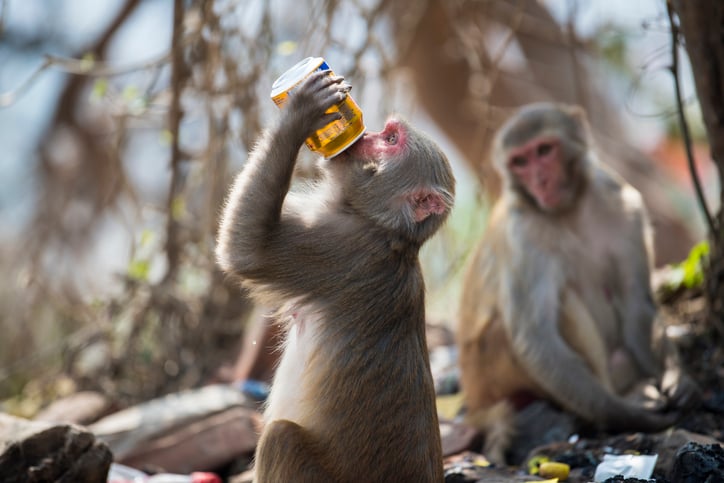Gene therapy curbs alcohol use disorder in primates by halting abstinence-relapse cycle
13 Aug 2023
Gene Therapy

Preview
Source: FierceBiotech
Researchers found that using a gene therapy to elevate levels of GDNF, a brain protein, could keep alcohol cravings in monkeys at bay.
Humans—and our ancestors—have been drinking alcohol for thousands of years, and likely becoming addicted to it for just as long. Yet, even as our understanding of the biological underpinnings of addiction has progressed enough for scientists to develop effective drugs, many people with alcohol use disorder, or AUD, still find themselves trapped in a loop of abstinence and relapse.
But if results in monkeys bear out in humans, a new gene therapy might be able to interrupt the cycle. In the results of a study published Aug. 14 in Nature Medicine, scientists from Ohio State University Wexner Medical Center and School of Medicine, Oregon Health and Science University, the Oregon National Primate Center and the University of California, San Francisco reported that they were able to halt AUD in primate models by expressing a key brain chemical called glial cell line-derived neurotrophic factor, or GDNF, which suppressed their desire to consume large amounts of alcohol for months at a time.
“Overall, our findings indicate that GDNF gene therapy could diminish reintroduction-associated alcohol intake in our primate model,” co-corresponding author Krystof Bankiewicz, M.D., Ph.D., a researcher at Ohio State, said in a press release. “We believe this approach shows merit for further study as a promising therapy for AUD and possibly other substance-abuse disorders.”
GDNF is found in several regions of the adult brain containing neurons that secrete the neurotransmitter dopamine, where it protects them from damage—including the kind caused by alcoholism. Its potential to curb alcohol consumption has been investigated for more than a decade; other compounds studied as a treatment for AUD, like the hallucinogen ibogaine, may work at least in part by upregulating GDNF.
Previous studies suggested that alcohol consumption directly downregulates the gene responsible for encoding GDNF. Additionally, these studies demonstrated that overexpressing this gene can attenuate alcohol cravings in mice. Such findings led Bankiewicz’s team to investigate whether a gene therapy that upregulates the GDNF gene in the mesolimbic reward pathway—a dopamine-rich tract through several brain regions that is well known for its role in addiction—could be a practical way to treat AUD in primates without the risk of relapse.
To do that, the scientists first habituated eight macaque monkeys to alcohol. Next, they infused an adeno-associated virus vector that encoded the GDNF gene into the brains of four of them, doing so directly into the brain’s ventral tegmental area, or VTA. The VTA is a key player in the mesolimbic reward pathway, as it’s the site of dopaminergic neurons that send signals to other regions downstream. The other four primates, serving as controls, received a saline solution.
The scientists tested the monkeys’ blood alcohol levels throughout the experiment. They found that while the controls had consistently higher blood alcohol levels, indicating that they were “relapsing” during exposure periods, they were undetectable most weeks in the treated primates. That suggests that by elevating GDNF, the gene therapy was indeed keeping their alcohol cravings at bay.
This is far from the first gene therapy for substance abuse. One of the earliest examples is a gene therapy that increased the number of dopamine receptors in the brains of mice, which decreased their interest in the drug. A little over a decade later, the Mayo Clinic’s anti-cocaine gene therapy—which works by a different mechanism—is recruiting for a phase 1 clinical trial. Researchers from the University of Arkansas have encoded anti-meth genes into mice that made it so the drug was less rewarded, reducing the amount of it in their brains.
For more details,please visit the original website
The content of the article does not represent any opinions of Synapse and its affiliated companies. If there is any copyright infringement or error, please contact us, and we will deal with it within 24 hours.
Organizations
Indications
Hot reports
Get started for free today!
Accelerate Strategic R&D decision making with Synapse, PatSnap’s AI-powered Connected Innovation Intelligence Platform Built for Life Sciences Professionals.
Start your data trial now!
Synapse data is also accessible to external entities via APIs or data packages. Leverages most recent intelligence information, enabling fullest potential.





